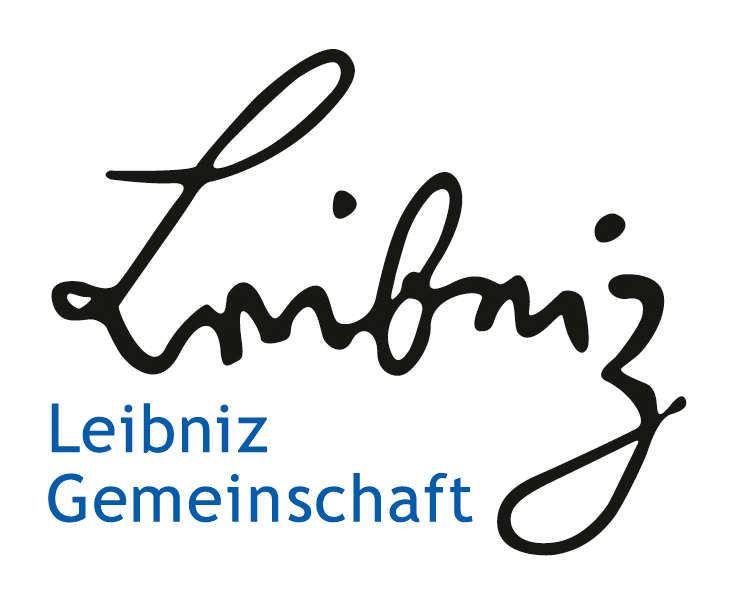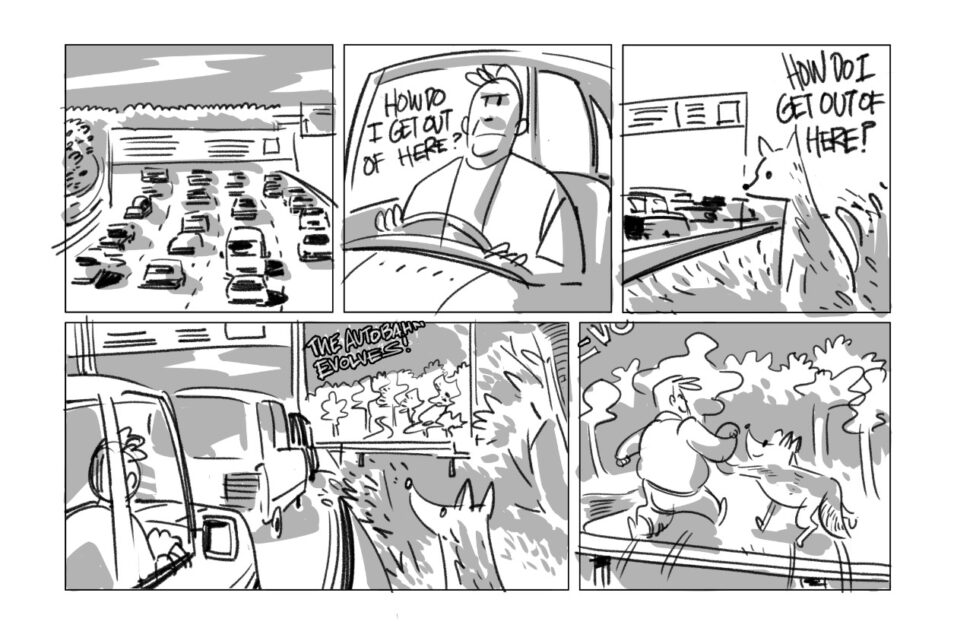Authors:
Theo Aalders
Citation:
Aalders, T. (2024): Collaborative Comic Creation. In: VisQual Methodbox, URL: https://visqual.leibniz-ifl-projekte.de/methodbox/2023/07/14/collaborative-comic-creation/
Essentials
- Aim: CCC aims at enabling participants to visualise futures.
- Ambition: CCC aids participants with visualization.
- Guidance: CCC guides participants communicatively.
Description
The Collaborative Comic Creation (CCC) methodology is designed to enable participants to actively co-create visual narratives of their future imaginaries. By creating comic strips rather than individual images, CCC allows participants to create narratives about anticipated changes, including affective and human-nature relations. The methodology was developed in the context of a proposed mega infrastructure project and its expected impact on the local population. However, it can also be adapted to other contexts involving any kind of future imaginaries.
CCC was jointly developed by a group of artists and scientists, and builds on previous work by Johansson and Isgren (2018), who based their work on collaborative landscape paintings.
Procedure
The method consists of four distinct parts. (a) a pre-survey to identify participants, (b) the implementation of the workshop itself (c) a synthesis of the workshop results by the artists, and (d) a follow-up survey to get feedback on the comic strips from the workshop participants. Most of these parts consists of several steps, which are listed below.
- a1: The pre-survey can be part of a conventional fieldwork based on interviews, focus group discussions, or participant observation.
- a2: Selecting groups or individuals for the workshop should consider diversity in terms of age, gender, ethnicity, geographical location. Perhaps problematically, the selection also needs to be sensitive to ensuring that the participants’ account can be translated into an engaging and ‘tellable’ story.
- b1: A suitable meeting place is essential. At the very least, it needed to provide enough space, a table and good lighting. Ideally, it should also provide an atmosphere in which participants feel comfortable. It should also provide a means of keeping outside interruptions to a minimum. Organisers should provide both drawing equipment, as well as snacks and refreshments.
- b2: After introductions, the artists conduct a short general interview focusing on biographical details of the person. This step is important to show the artists what is important to the participants and consequently, on what aspects they should focus on later.
- b3: In the next step, the participants are invited to become more actively involved in the process of drawing comics. The researcher remains in the background as an observer, noting which themes and scenes seemed particularly important to the participant(s). The artists have the most difficult task of translating the participants’ narrative into a storyboard, encouraging them to participate in the drawing of each panel or specificelements.
- c1: After the workshops, the artists use the collection of storyboards and sketches to produce a short comic story of about 3 to 5 pages.
- c2: In most cases, the workshop will not result in a full storyboard. In these cases, the artists will have to fill the gap, also using interview material from the pre-survey.
- d1: Once the first version of the comics has been completed and printed (about 100 copies should suffice), the researcher should return to the area and ask for feedback on the comics, mainly from the workshop participants, but also from other people in the area.
- d2: Finally, the artists will revise the first version of the comic according to the feedback. This step is essential to ensure that the participants feel represented by the final version of the comic. It also provides valuable data for the researcher.
Requirements
The main prerequisite for this method is funding to compensate the artist(s) for their work. Under no circumstances should “exposure” be accepted in lieu of payment. The artist should ideally be a member of the community where the research is taking place. In addition, the method requires artistic materials, as well as funds for venue hire, transport, and printing.
Evaluation
CCC involves extensive preparation and work with participants – in terms of time, research and personnel. In return, participants receive ample support to visualise.
Example
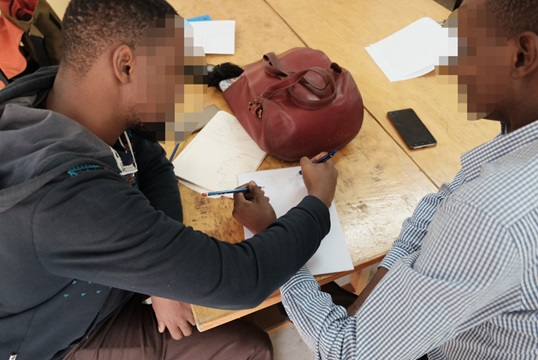
Illustrator (left) and workshop participant (right) drawing a traditional Samburu hut together (Source: T. Aalders)
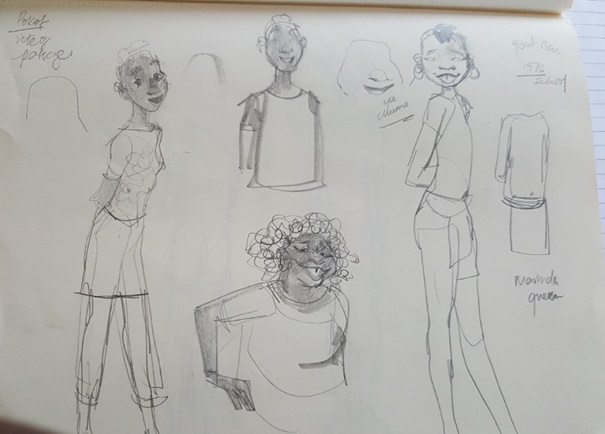
Sketches during the workshop depicting the workshop participant in a “modern” dress (left) and traditional attire (right) (Source: T. Aalders)
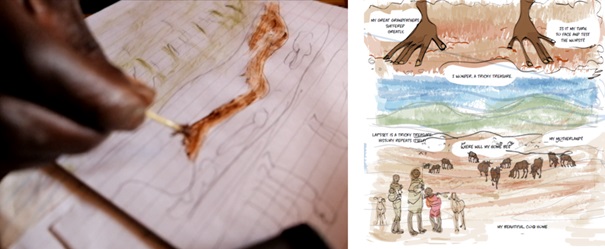
Left: a workshop participant suggests using soil and leaves to draw landscape and flora. Right: illustrator’s rendering of the scene based on the participant’s sketch (Source: T. Aalders)
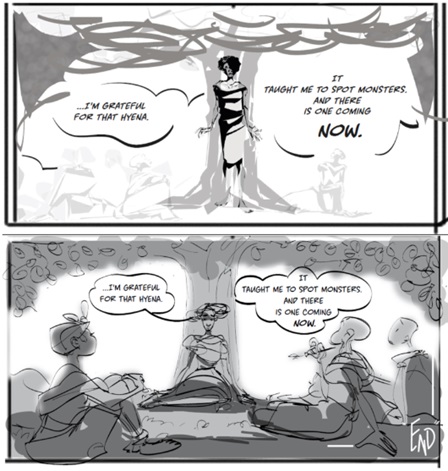
Two versions of the same scene. Top: the protagonist is the centre of the story (first version). Bottom: after feedback from the workshop participant, the protagonist is depicted as part of a community (second version) (Source: T. Aalders)
Useful Ressources
Suggested Tools
- Pen and paper
References
Aalders, J. T., Moraa, A., Oluoch-Olunya, N. A., and Muli, D. (2020): Drawing together: making marginal futures visible through collaborative comic creation (CCC), Geogr. Helv., 75, 415–430, https://doi.org/10.5194/gh-75-415-2020

